- Administrator
- Albums and Singles
Originally released by Swedish jazz imprint Moserobie in 2003, Live at Oslo Jazz Festival (Virus374) features a special one-time performance of Swedish political punk band The (International) Noise Conspiracy in collaboration with noted jazz musicians Jonas Kullhammar and Sven-Erik Dahlberg.
Live at Oslo features songs from T(I)NC's first two albums on Epitaph, Survival Sickness and A New Morning, Changing Weather, transformed into more dreamy arrangements. While retaining the T(I)NC-ness of the original material, the band with their guest musicians improvise freely for some spaced-out jams. The fact that Dahlberg and Kullhammar, a five-time Swedish Grammy nominee, are accomplished jazz musicians is an icing on the cake of this surprise party. Reminiscent of The Ex's collaboration with avant garde cellist Tom Cora in the early 1990s, Live at Oslo demonstrates T(I)NC's willingness to take risks and collaborate with musicians practicing different genres to expand their sound successfully.
Live at Oslo has never been available commercially in North America and is a highly sought-after missing link in T(I)NC's catalog. Alternative Tentacles is proud to bring this album stateside, revealing a whole new facet to a familiar band with an established sound.Alternative Tentacles founder and (I)NC fan Jello Biafra writes; "My first reaction to (International) Noise Conspiracy was, 'Aha, the missing link between Chumbawamba and the Hellacopters!' It's cool how they set themselves up so they can expand in any number of directions at once. Don't be put off by the jazz reference here.Sure, it's smoother, and yes, jazzier than other I.N.C. releases, but in such a way that most I.N.C. fans will really dig it. It's another essential piece of the puzzle."
Read More
- Administrator
- Albums and Singles
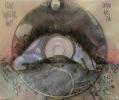 The good ship Archive has reissued another great Japanese underground release, this time an album by Astral Travelling Unity. As the title suggests it is half live, half studio; one long track from each. The quality of both pieces is high but a little samey. I am intrigued, however, and keep coming back for more.
The good ship Archive has reissued another great Japanese underground release, this time an album by Astral Travelling Unity. As the title suggests it is half live, half studio; one long track from each. The quality of both pieces is high but a little samey. I am intrigued, however, and keep coming back for more.
Archive
“Studio Session” features echoing wind instruments and synthesisers that build up some interlocking drones and set me ill at ease for the entire 40 minute piece. It always sounds like it is going to break into a motorik style rhythm and the first couple of times I listened to it I was disappointed that it does not break into something more immediately satisfying. However, once I knew not to expect the expected and instead concentrated on what was actually on the CD, it became highly absorbing for me.
As the piece progresses, it does get more and more active. Splashes of guitar disrupt the flow of the atmospheric drones. The synths begin to sound haunted and the mellow vibes that are so strong in the first half of the piece begin to dissipate. The electric sitar and violin add an uneasy franticness to the piece. On one hand it feels like the musicians making the drones are trying to pull the piece towards something slow and meditative while the others are trying to let all hell break loose. A couple of times it does get a bit chaotic but before long the group settle back into a quiet but tense hypnotic drone. The piece finishes with the group intensifying their playing to create a flood of sound that feels incredible after over half an hour of holding back.
On the live side of things, the band is joined by Acid Mother Temple’s Makoto Kawabata. Musically "Live Session" is cut from a similar cloth to the studio work (and oddly it sounds better recorded too). This time the drones are supplemented with periodic moaning vocals bringing the piece down from the spacey atmosphere of "Studio Session" to something more earthly, like a descent to hell. Also, unlike the studio piece there was no problem getting into "Live Session," instead it instantly engulfed me. Stabs of guitar cut through the sustained drones adding a thick layer of menace to the piece.
Out of the two pieces, "Live Session" definitely comes out on top. I find myself skipping the studio piece the odd time, it is not that it is in any way inferior but I found the live material far more engaging. I do not know if I could be bothered with other releases by Astral Travelling Unity as they seem like they are a bit of a one trick pony but Studio and Live at least is a nice addition to my ever growing weird Japanese music pile.
samples:
Read More
- Administrator
- Albums and Singles
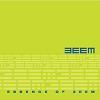 This Italian three-piece combines electronic beats and sampling with some beautifully menacing guitar and saxophone in a very pleasing way. They are not breaking down barriers but they are certainly no chore to listen to. The six pieces included here all work around the same mid-paced jamming style, the same patch of ground being covered but from alternative angles and viewpoints.
This Italian three-piece combines electronic beats and sampling with some beautifully menacing guitar and saxophone in a very pleasing way. They are not breaking down barriers but they are certainly no chore to listen to. The six pieces included here all work around the same mid-paced jamming style, the same patch of ground being covered but from alternative angles and viewpoints.
Small Voices
Listening to this album I found myself thinking of Coil’s work, especially in the beat department. While 3eem do not reach the perfection of that group, they make a fair stab at an album and put their own identity on the music. The rhythms are infectious, especially on the opener "Reverse." where the guitars and glitchy beats work together to drive the piece on while the saxophone swoops around them. Danilo Corgnati's guitar definitely lifts Essence of 3eem up from being a throwaway beats and brass album, his tasteful playing provides a wonderful melodic backbone for the music featured here.
Corgnati uses a nice bit of wah on his guitar during "In the Beginning it was an Accordion," which is pleasingly not totally masturbatory. The only thing that slightly irked me was the long final piece, "24 Apes." It takes up over a third of the album but could be a lot shorter; some of the parts that make it up do not quite work as well as others and the flow of the piece is disrupted.
Essence of 3eem sits together nicely; the different pieces all seem to fit together like a soundtrack (but not in that clichéd epic sense of soundtrack that gets thrown around all too often). They demonstrate some adventurous use of sounds with some unusual use of the saxophone. At least it sounds like the saxophone, it may be electronics, either way it sounds good. There is not a bad piece on Essence of 3eem. It is very easy to listen to and get lost in. Granted there is nothing groundbreaking either but it is a solid album rich in high quality music.
samples:
Read More
- Administrator
- Albums and Singles
 Originally released as a seven inch and two CD-Rs on the American Tapes label a couple of years back, this is a gratefully received reissue. Combined into one ugly genetic mishap and flesh hacked covered package by Aaron Dilloway's Hanson label, this is a disintegrated release full of blossoming black sounds. Collection is another piece of weighty evidence in the already inexorable case for Wolf Eyes' limited items needing to receive the same sort of press as their Sub Pop releases.
Originally released as a seven inch and two CD-Rs on the American Tapes label a couple of years back, this is a gratefully received reissue. Combined into one ugly genetic mishap and flesh hacked covered package by Aaron Dilloway's Hanson label, this is a disintegrated release full of blossoming black sounds. Collection is another piece of weighty evidence in the already inexorable case for Wolf Eyes' limited items needing to receive the same sort of press as their Sub Pop releases.
Here, the music is so intensely bordering the line between beauty and deconstructed sound exploration. The sheer breadth of textures and styles that they have used is nothing short of astounding. The lightness of touch and obvious connectivity reveals the brains behind the more visible brutish roots of their more well known and slasher-flick titled material. The band’s DIY press releases have always veered that little bit more to the left than their big releases, documenting more closely the zoned-out splendour in the Coors / weed-fuelled stage jams. Anyone who remains still unconvinced that these guys aren't the real deal, this is the one of the easiest to find pieces of evidence for the defense yet.
The tracks run from just over a minute to an over 30 minute long finale, but it would be ridiculous to try to pigeonhole these pieces into single-styled pieces. Scattered between exploring inner worlds and blowing-out corneas through riotous frequency changes, this is the place where digits are bent from their 0 and 1 roots into self-adapting cyborg sinews. Elements like stuck groove bell work, tape machine cloud cover and delicate looped horns seem like perfectly constructed movements, musical conclusions of thirty minutes of sweaty improv work.
Beautifully cut down to size, Collection is about construction through a group mind with tourmate and longterm friend John Wiese fitting into the dynamic seamlessly. Wolf Eyes steady stream of releases are making this all seem so easy.
samples:
Read More
- Administrator
- Albums and Singles
 This long awaited, much delayed "best-of" release doesn't come close to the grandeur of the new Fad Gadget package, though it satisfies a long overdue need to formally acknowledge Nitzer Ebb as groundbreaking revolutionaries, the shockwaves of their speaker-rattling, dancefloor devastating diatribes still being felt in electronic music today.
This long awaited, much delayed "best-of" release doesn't come close to the grandeur of the new Fad Gadget package, though it satisfies a long overdue need to formally acknowledge Nitzer Ebb as groundbreaking revolutionaries, the shockwaves of their speaker-rattling, dancefloor devastating diatribes still being felt in electronic music today.Many contemporary techno producers are deeply in the debt of Bon Harris and Douglas McCarthy, who while not godfathers of that scene are at least cherished uncles. Novamute's decision a few years back to press to wax official remixes of Nitzer Ebb anthems from artists like Terence Fixmer, Thomas P. Heckmann, and The Hacker couldn't have received a better reception. Since then, you'd be hard pressed to go to just about any hard techno event in the known world without hearing at least one of these bangers. Although a companion release featuring those reworks and others was also made available on CD recently, Body of Work, a compendium of 32 tracks including an entire disc of selected mixes, will hopefully acquaint at least some of those revellers with the originators' originals.
Starting from the promising metal-on-metal spark of Warsaw Ghetto b-side "Isn't It Funny How Your Body Works," ending on Big Hit lackluster "I Thought", and hitting all the necessary points in between, the first half of this double disc committedly runs through Nitzer Ebb's recording career, warts and all. Of course the hits are covered, with "Join In The Chant" and "Control, I'm Here" sounding just as incredible now as they did when I first heard them as an angsty teenager in New York City clubs. Though their best known cuts came off This Total Age and Belief ("Murderous" and "Hearts And Minds" being my personal favorites from those), there were several quite memorable singles from the subsequent, less acclaimed Showtime and Ebbhead records. "Getting Closer" and "Fun To Be Had" might not have been furious fist pumping anthems like "Let Your Body Learn," though they showcased the duo pushing their sound further, and successfully at that. The same cannot be said for the selections from 1995's Big Hit, which over a decade later still disappoint and frustrate even their most devoted fans. I'm almost certain that nothing from that critical and commercial flop even made it into the setlists of their North American reunion tour this year.
What makes this compilation particularly worthwhile even for those who own all these albums is the inclusion of selected material found on the singles, including rare songs and remixes that retrospectively deserve more exposure. Many of these treats are found on the second disc, my favorites being the alternate mixes, a number of which are only available on long out-of-print singles. Ranging in style from the grit and grime of "Shame (Mix Two)" and "Control I'm Here (Strategic Dancefloor Initiative Mix) to the funkier "Fun To Be Had (Long Version)" and "Hearts And Minds (Mix Hypersonic)," today's technoheads can get a crack at dropping these into their current sets without digging endlessly through musty used record store crates.
For years now, rumors have gone around regarding a retrospective release for Nitzer Ebb. That being said, I find it extremely frustrating that Mute failed to offer any visual component, as a DVD encompassing the videos and some live performances from the band was anticipated for some time. Regardless of fault, the omission of this material is disappointing, and I can only hope that at least a video collection can be salvaged from this historically rocky artist-label relationship. Of course, considerably more desirable would be a new Nitzer Ebb album, and I don't give a fuck who puts the damn thing out.
samples:
Read More
- Administrator
- Albums and Singles
 Andy Cabic finally steps out from under the shadow of pal Devendra Banhart on this follow-up to Vetiver's self-titled debut. While there are some standard folk moments, much of the album points to an expansion of the band's sound.
Andy Cabic finally steps out from under the shadow of pal Devendra Banhart on this follow-up to Vetiver's self-titled debut. While there are some standard folk moments, much of the album points to an expansion of the band's sound.
The album opens with the quasi-mystical drones of "Been So Long," and it’s not long before some Indian-influenced drumming enters the picture alongside Cabic's vocals. Cabic's guitar remains in the background for much of the song, and it’s a refreshing way to begin this album considering how guitar-oriented the group’s first effort was. "You May Be Blue" is also a change of pace, relying more on a bottom-heavy rhythm rather than a melody to convey its urgency. "No One Word" hearkens back to Vetiver's earlier work, but the addition of a graceful slide guitar is a pleasant update.
The album hits a dull spot in the middle with songs that aren't a whole lot different from other things the group has done. I like the drums on "Idle Ties," but the song as a whole is little boring, as is the lengthy "I Know No Pardon," which follows. "Double" marks another change for the better with subtle drones that eventually open up into a sweeping string section. An even greater divergence is "Red Lantern Girls," which ends in a searing electric guitar outro that's more exuberant and energetic than anything I've heard recorded by this group so far.
Cabic can get a little too sentimental when the mood strikes him, and a succession of such material becomes a little numbing. Also, his singing style strays too far into Banhart territory sometimes, which isn't terribly surprising. Yet despite these flaws, this album is a remarkable improvement over the debut. Cabic's songwriting has undergone tremendous growth in the intervening years, and this recording is the proof.
samples:
Read More
- Administrator
- Albums and Singles
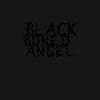 Campbell Kneale’s one man doom project is a work of immense force. Taking some influence from his other project, Birchville Cat Motel, Bliss and Void Inseparable is an intense and atmospheric journey through the dark. I must point out that the title does not capture the mood of the album, I can identify the void components but the bliss is well hidden. This album is desolate and soul destroying, I love it.
Campbell Kneale’s one man doom project is a work of immense force. Taking some influence from his other project, Birchville Cat Motel, Bliss and Void Inseparable is an intense and atmospheric journey through the dark. I must point out that the title does not capture the mood of the album, I can identify the void components but the bliss is well hidden. This album is desolate and soul destroying, I love it.
20 Buck Spin
Starting with what sounds like a gargantuan Lovecraftian nightmare slowly plodding in the distance along a black chasm, this hour long piece immediately sets me on edge. The ambience that Kneale builds up recreates that paranoia that is only present at 2am when there is no one to turn to. When that Lovecraftian nightmare finally arrives there is an abundance of high pitched howling which sounds absolutely terrifying. A buzzing, didgeridoo-sounding chant further brings the mood down. As the packaging suggests, at high volumes this racket is transcendental (but not in the blissful way as I think Kneale may have intended).
After 17 minutes of this amazing dirge, the guitars and drums rip into the mix. At first it felt like a bit of a letdown after such an incredible introduction. However once I got over the shellshock and got into Kneale’s treacle-like riffing I was captured again. The tone on the guitar is filthy. It sounds like the guitar was dragged through the gutter and the amp was cursed before it was recorded in a tomb. The drumming is basic, just a primal beat harking back to the plodding nightmare sounds of the section of the piece.
What strikes me as being one of the most powerful parts about Bliss and Void Inseparable is the lack of "proper" vocals. Some of the new wave of doom bands try and vomit their lungs up in an attempt to be grim. Kneale dispenses with lyrics and his vocals are used sparingly to form something more like an ill wind blowing through a crevice on a bleak mountainside. The grinding riffs mutate into a more tolerable but equally crushing feedback and piano refrain. Like pretty much everything else used to make this album, it is chilling to listen to.
By the end of the disc I am exhausted and feel like I need a shower to get the grime off me. Actually, even halfway through I feel like stopping because it is so heavy but perseverance pays off because I feel like I have done a marathon by the time it is over. Maybe this listening equivalent of the runner’s high is the bliss that Kneale refers to in the title. I feel like I have earned the privilege of putting the CD back in its sleeve, I would not be able to listen to this all day every day but Bliss and Void Inseparable is the sort of heaviness that I need from time to time to clear the cobwebs (and annoy the neighbours).
samples:
Read More
- Administrator
- Albums and Singles
 The beautiful photographs of little houses in the countryside capture the vibe of You Are My Home succinctly. The album very much encapsulates the feeling of being very small in a wide open space, unable to do anything but sit and take in the splendor of the surroundings. Nathan Amundson's songs are deceptively simple. They are gentle but with a hidden strength that only occasionally erupts (and when it does come through it is impressive to say the least).
The beautiful photographs of little houses in the countryside capture the vibe of You Are My Home succinctly. The album very much encapsulates the feeling of being very small in a wide open space, unable to do anything but sit and take in the splendor of the surroundings. Nathan Amundson's songs are deceptively simple. They are gentle but with a hidden strength that only occasionally erupts (and when it does come through it is impressive to say the least).
Important
The majority of the songs are fine examples of songcraft. Amundson is joined by an all-star group of musicians (featuring the likes of Jessica Bailiff; Chris Brokaw of Come, The New Year, Pullman and more; and Shellac’s Bob Weston) who are well able to flesh out his compositions into gorgeous productions. “Happy Ending” which not surprisingly sits near the end of the album is a stunning piece, although despite the name there are more melancholy feelings present than happy ones. This song is not alone as nearly all the pieces capture a delicate and lovely sadness. To me the songs are not sad songs but they capture a feeling that is at the same time wonderful and despondent. I hesitate to use the word duende but it is a similar feeling. It is that same feeling of being snuggled up under the blankets after a long day and the rain is beating against the window.
From time to time the musicians flex their muscles on songs such as “Can't I Wonder” and “Win or Lose.” The former is a slow burner where the final third or so of the song is where it lets loose. On the latter, when the trumpet kicks in, the song gets lifted up into this realm of beautiful simplicity that is hard to hit. Here the convention would be to let the trumpet rise and rise until it overcomes the listener but there is a tight leash on Weston's trumpeting so the effect is not spoiled. On both songs, the pace is quicker than on the other songs which gives them extra exuberance (but still maintaining the almost despondent aura of the album).
You Are My Home is one of those albums that I am delighted to discover (I use the term “discover” loosely, it is not like I found it in a basement under a pile of James Last records) and will no doubt plague my friends into hearing. This is an absolute gem of an album and I cannot stop playing it.
samples:
Read More
- Administrator
- Albums and Singles
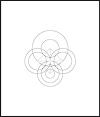 If the original Hafler Trio performances and releases of How to Slice a Loaf of Bread can be seen as full meals, Colin Potter’s reworking is a compact collection of ideas shoved into one of those toasters that squish the sandwich into a condensed snack. A Pressed On Sandwich doesn’t cover the depth and breadth of the original releases but Potter does augment the material into a worthy piece in its own right.
If the original Hafler Trio performances and releases of How to Slice a Loaf of Bread can be seen as full meals, Colin Potter’s reworking is a compact collection of ideas shoved into one of those toasters that squish the sandwich into a condensed snack. A Pressed On Sandwich doesn’t cover the depth and breadth of the original releases but Potter does augment the material into a worthy piece in its own right.
Nextera
Despite being the work of Colin Potter, this album looks, sounds and reads like The Hafler Trio. A Pressed On Sandwich is instantly recognisable as being cut from the same loaf as the original releases, Potter hasn’t gotten rid of any of the sounds’ identities. He takes an overview of all the sonic landscapes initially conjured up by Andrew McKenzie creating a digest of the source material. Indeed a quote of Potter’s in the press release acknowledges this, stating it was his “intention to preserve the overall shape and sense of the material, but at the same time move it to another (sonic) place.” There is a completely different mood and space captured here and as short as it is (just over 18 minutes compared to the 5 hours plus of How to Slice a Loaf of Bread) it is obvious that there’s more to this sandwich than the two slices of bread on the outside.
The piece begins with a slowly changing drone and crumbs of sound popping from the speakers, not very interesting at normal volumes but extremely rich in texture when the volume is turned up to a sensible level. There isn’t the same slow build up with Potter’s work and at first it seems that there isn’t as much time to relish in the details. Granted it’s nowhere near hyperactive but it does seem to rush through the sounds relative to the more reserved pace of How to Slice a Loaf of Bread. This isn’t a problem in the least; it is merely a different approach by Potter to put his own spin on the material. It does eventually level out into a meditative throb that takes on the religious character present on How to Slice a Loaf of Bread. This flows into the final section where there is a heavy emphasis on high frequencies. I found this last portion painful to listen to, even at low volumes. This deters me from always listening the whole way through as more than once I’ve been left with a headache after playing the full piece.
Potter has done such a wonderful job on this release, doing justice to McKenzie’s own inimitable work even if it caused me physical pain. In addition, until a McKenzie-approved reissue of the How to Slice a Loaf of Bread discs happens, A Pressed On Sandwich is as close as many will get to hear it.
Read More
- Administrator
- Albums and Singles
 Sheffield label Singing Knives have gathered together some of the city's more appealing noise/folk underground (and their peers) here showing that it's certainly not a city still in thrall of Warp's legacy and output. The similarity between these acts is pretty loose, but most appear to work within or around the use of traditional forms / instruments, improvisation and drone or a combination of the two styles.
Sheffield label Singing Knives have gathered together some of the city's more appealing noise/folk underground (and their peers) here showing that it's certainly not a city still in thrall of Warp's legacy and output. The similarity between these acts is pretty loose, but most appear to work within or around the use of traditional forms / instruments, improvisation and drone or a combination of the two styles.
The vast majority of compilations will contain a couple of fast-forward stinkers, but this is relatively rare in that regard; there isn't a duff track here. From the opening Halloween at Christmas squall of Tirath Singh Nirmala’s title track to McWatt’s wearily gorgeous "Untitled," this is a route that winds between conventional and abstract musicality. The simple folky bent of Peril Hill and Feather Gatherers don’t suffer from being programmed up against the braised trapped chord hum of more established acts like Chora.
The songs that take the less established route, flowing into improvisational heavens could do with extending a touch; there’s nothing worse than coming out of a trace too early. The lava lamp ambience of Ben Reynolds and Big Eyes Family Players feel particularly brief, sucking me in and spitting me out too soon. Competing for this release’s finest moment are Directing Hand and their chilling obsessive take on "Down in Yon Forest" and Michael Flower Band's frantic toe tapping swoon of "Santa Flauta." Compilations don't always need central themes, concepts or strictly adhered to genre rules if they can keep up the quality quota like me Singing at the Moon.
samples:
- Directing Hand - Down in Yon Forest
- Nalle - Are You Beautiful Inside? Are You Here?
- Michael Flower Band - Santa Flauta
Read More
- Administrator
- Albums and Singles
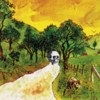 With their latest album of pastoral folk pop, Glenn Donaldson and Donovan Quinn seem determined to let everyone know where they're from, in case there were any doubts.
With their latest album of pastoral folk pop, Glenn Donaldson and Donovan Quinn seem determined to let everyone know where they're from, in case there were any doubts.
 
It's not just the insular title of the album that roots them in California, but also the Byrds-esque guitars and light pop harmonies that anchor them as much as anything else. Yet it’s not California as a place to which they lay claim, but rather California as an ideal, and it’s an important distinction that unfortunately makes them anachronistic. Rather than updating or contemporizing the folk sound of the ‘60s to say something about today’s culture, like Donaldson does with some of his other bands, here they revive it mostly intact. Although they do this sort of thing well, it comes across as a form of nostalgia for a time in which the musicians never lived, which is kind of a pointless exercise.
There isn’t a whole lot of ground here that the group didn’t already cover on last year’s Life & Love in Sparrow’s Meadow. One change, however, is the addition of a rhythm section. While the songs lack emotional distinction, it’s only the new rhythm section that lends them any personality. The most redeeming factor of the album is the strange twist of the lyrics, but even these are disguised under so much convention that their impact is lessened, if they’re noticed at all. The smugness of a song like "Jesus Was Californian" doesn’t help things, either.
Don’t get me wrong, the album sounds great for a revival act. The music’s pleasant enough and their harmonies are decent, but the songs don’t say anything to me that I haven’t already heard many times over from the original source material itself. I can’t help wonder why the band would bother other than to prove that they can.
samples:
 
Read More

